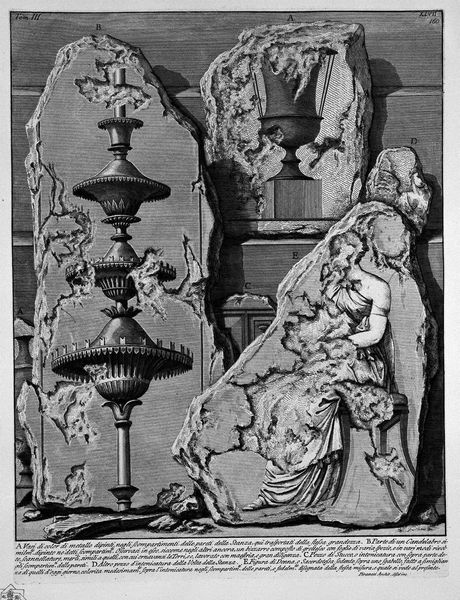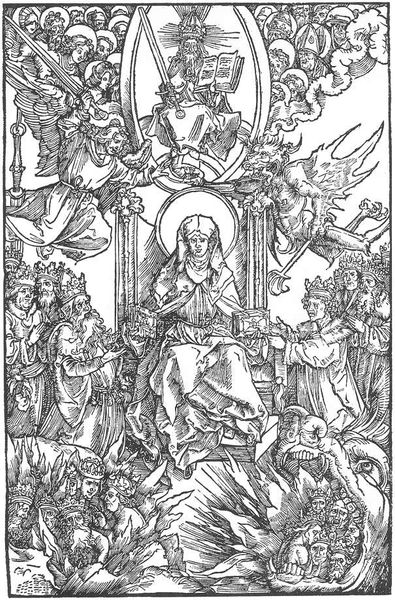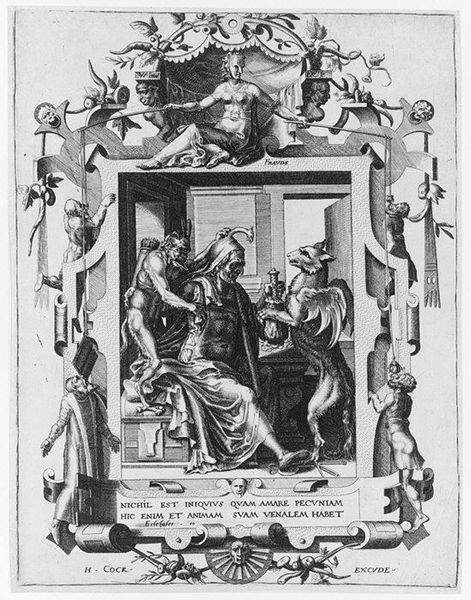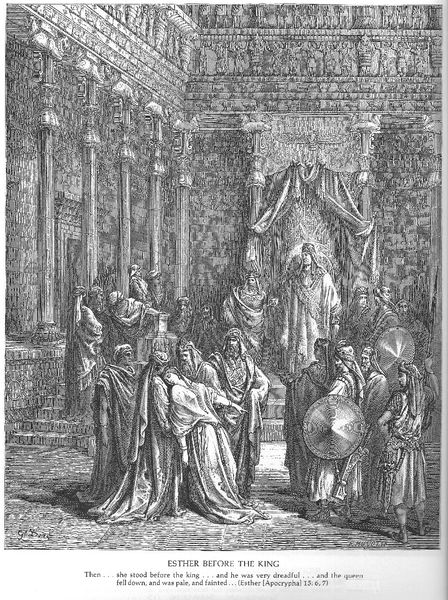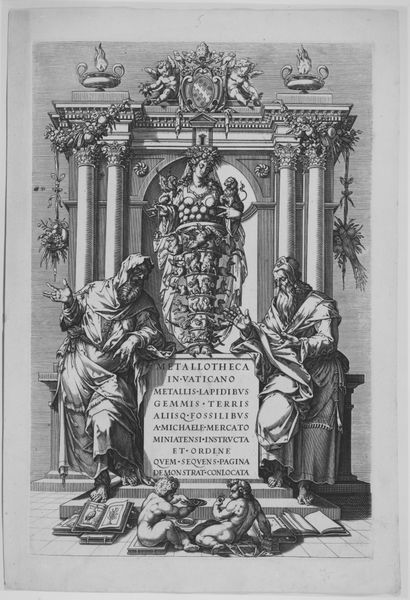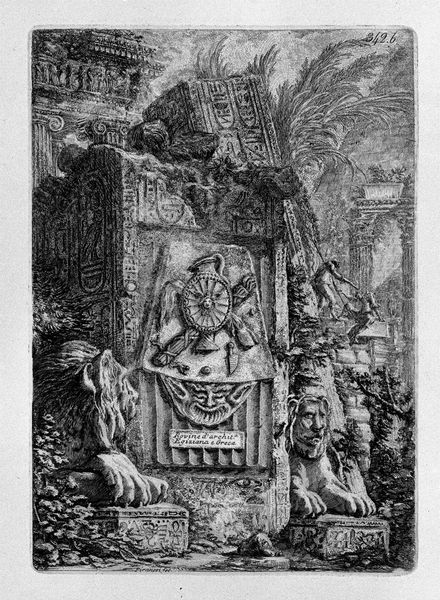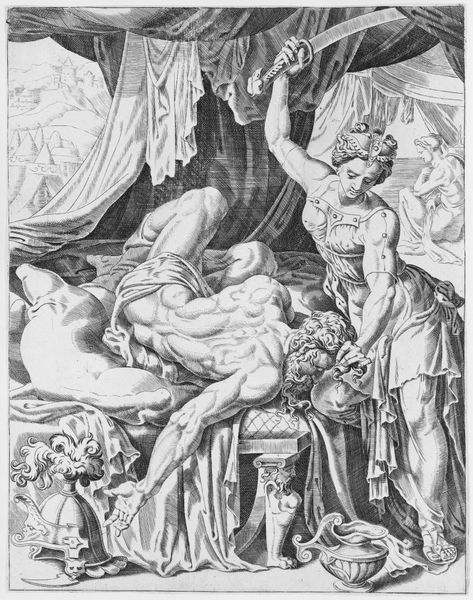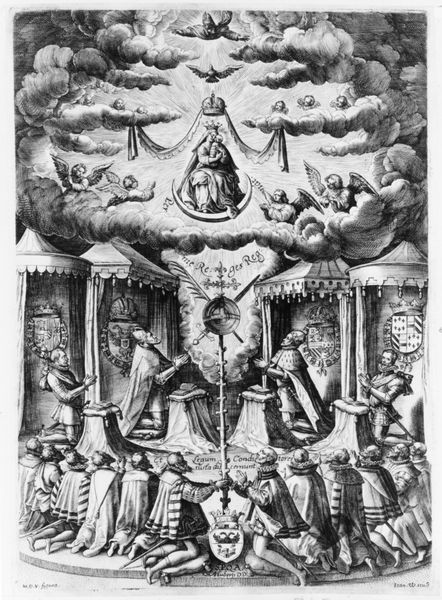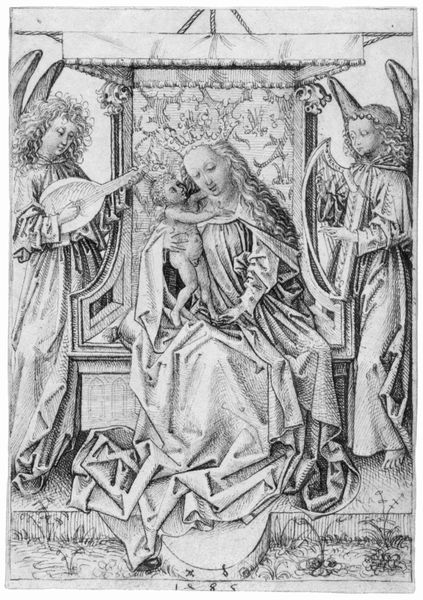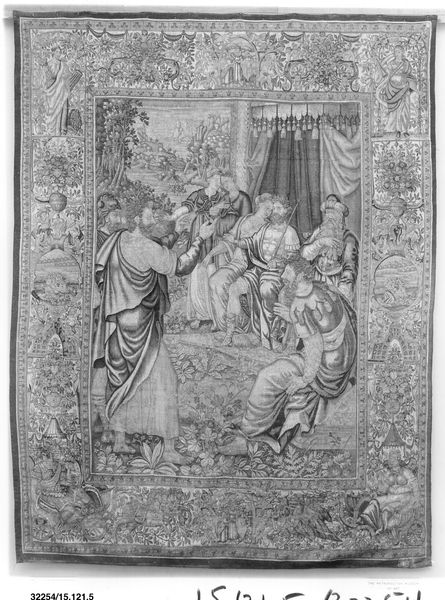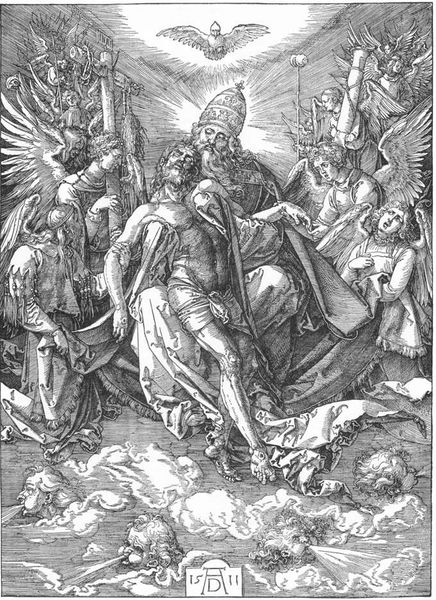
drawing, graphite, charcoal
#
drawing
#
charcoal drawing
#
figuration
#
11_renaissance
#
graphite
#
charcoal
#
history-painting
#
charcoal
#
graphite
Dimensions: 201 mm (height) x 158 mm (width) (bladmaal)
Editor: Here we have an intriguing charcoal and graphite drawing from the 16th century, entitled "Trophy with three putti and a female figure," attributed to an anonymous artist. The composition is so busy; it feels almost chaotic, yet there's an underlying structure trying to emerge. What do you make of this trophy? Curator: It's a fascinating convergence of symbols. Notice how the trophies themselves aren’t just decorative; they carry faces, miniature dramas frozen in their surfaces. It makes you wonder, what exactly is being celebrated? Or perhaps, more accurately, what is being commemorated? Editor: I see what you mean! It’s like the trophies themselves are witnesses. But why the putti, these cherubic figures? They seem almost mischievous amidst the more somber elements. Curator: Exactly! The putti, often associated with love and innocence, contrast sharply with the imposing armored figure. The image creates tension. Is it a study of the human psyche or the ephemeral nature of worldly glory? Editor: So, you're suggesting the putti disrupt a straightforward interpretation of victory or conquest? The contrast seems really pointed now that I consider it that way. Curator: The arrangement itself guides our emotional understanding. Look at the relationship of the female figure to the trophies—her downcast gaze, the drape of her robes. Are we observing triumph, or a reflection on its cost? Do the objects embody victory? Editor: I had been caught up in the figures as elements, failing to look into the psychological significance of their actions and being. Curator: Exactly. Each element—the figures, the trophies, their expressions—carries layers of meaning and raises more questions about legacy, remembrance, and our place in the cyclical performance of time. Editor: This has given me a whole new way of seeing not just this artwork, but how symbols in art act on the mind, playing many roles that shape understanding and invite consideration of our inner lives and cultural histories.
Comments
No comments
Be the first to comment and join the conversation on the ultimate creative platform.
